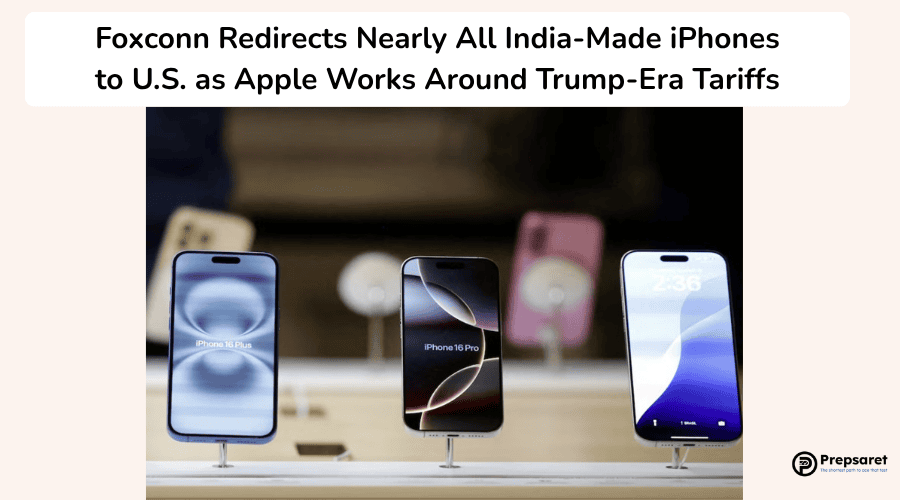In a notable shift, Apple has redirected nearly all its iPhone exports from India to the United States between March and May, a dramatic rise from last year’s 50% average, based on customs data obtained by Reuters.
This move highlights the tech giant’s strategy to reduce its reliance on China and avoid steep American tariffs.
The data reveals that Foxconn, Apple’s key manufacturing partner, shipped $3.2 billion worth of iPhones from India during that three-month period, with an overwhelming 97% headed for the U.S.
Previously, Indian-made iPhones were distributed more broadly, reaching European markets such as the Netherlands, Czech Republic, and the U.K.
May alone saw nearly $1 billion in iPhone exports from Foxconn in India to the U.S., marking the second-highest monthly total following March’s record-breaking $1.3 billion.
So far this year, Foxconn has exported $4.4 billion worth of iPhones to the U.S. from India, already surpassing its total exports of $3.7 billion for all of 2024.
Neither Apple nor Foxconn responded to requests for comment on the matter.
Related story: Apple Shows Off New ‘Liquid Glass’ Design for Its Devices
Shifting Production in Response to U.S. Tariffs
Amid escalating trade tensions, U.S. President Donald Trump recently announced a plan—pending final approval—to impose 55% tariffs on Chinese goods.
India, though facing a baseline 10% tariff like most of America’s trade partners, is currently working to avoid a proposed 26% retaliatory tariff that was introduced and then postponed in April.
Apple’s deepening investment in Indian manufacturing prompted criticism from Trump. “We are not interested in you building in India, India can take care of themselves, they are doing very well, we want you to build here,” Trump said he told Apple CEO Tim Cook.
In efforts to speed up shipments and minimize delays, Apple arranged chartered flights in March to transport $2 billion worth of iPhones—including models 13, 14, 16, and 16e—directly to the U.S.
The company also urged Indian customs authorities to slash clearance times at Chennai airport, a key export point, from 30 hours to just six.
According to Counterpoint Research analyst Prachir Singh, “We expect made-in-India iPhones to account for 25% to 30% of global iPhone shipments in 2025, as compared to 18% in 2024.”
Tata Electronics, another Indian supplier for Apple, also focused its output on the U.S., sending around 86% of its shipments there in March and April. Last year, only 52% of its exports were U.S.-bound. Tata did not comment on the latest figures.
While India aims to position itself as a global smartphone production hub, high import taxes on components still drive up manufacturing costs compared to other regions. Despite this, Apple continues to ramp up Indian production as a hedge against Chinese tariffs.
Read next: Meta and TikTok Challenge EU Fee in Court Over Transparency Concerns
Boost your career journey with Prepsaret! Whether you’re preparing for PMP, CompTIA, or HR certifications, Prepsaret offers the support you need to succeed.
Gain access to high-quality study resources, exam-like practice tests, and expert guidance designed to help you perform your best and take your career to the next level!

